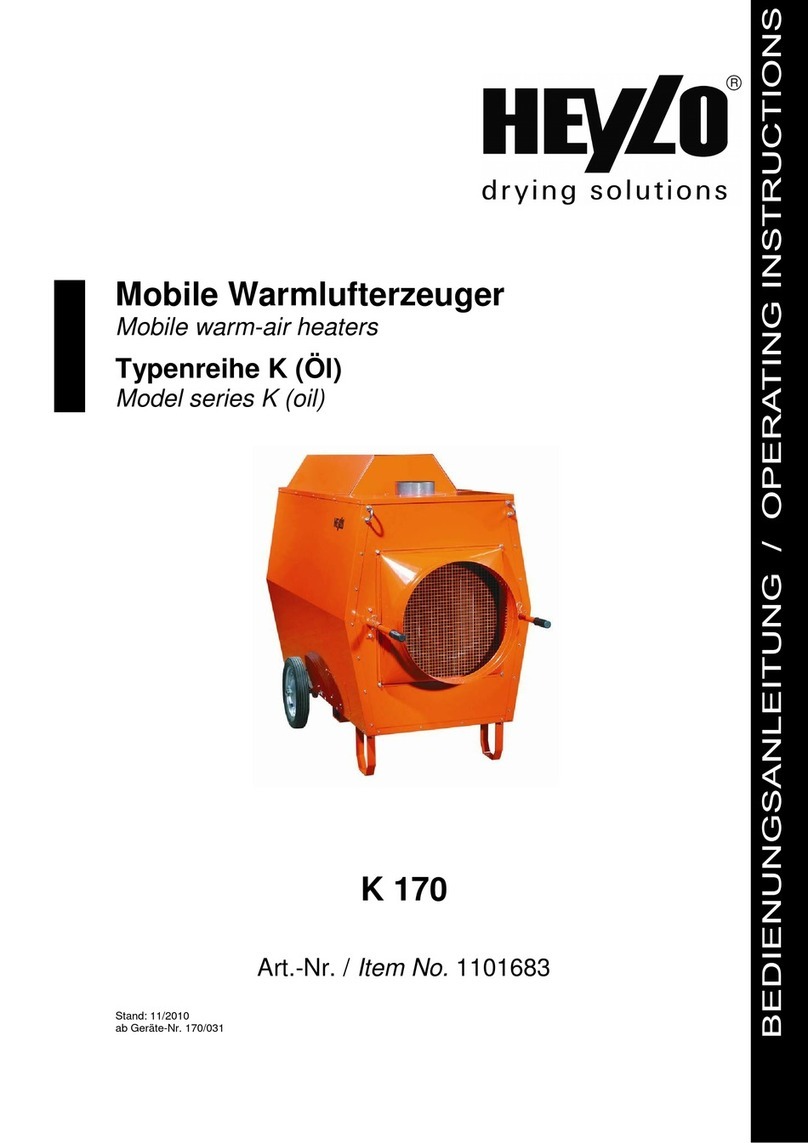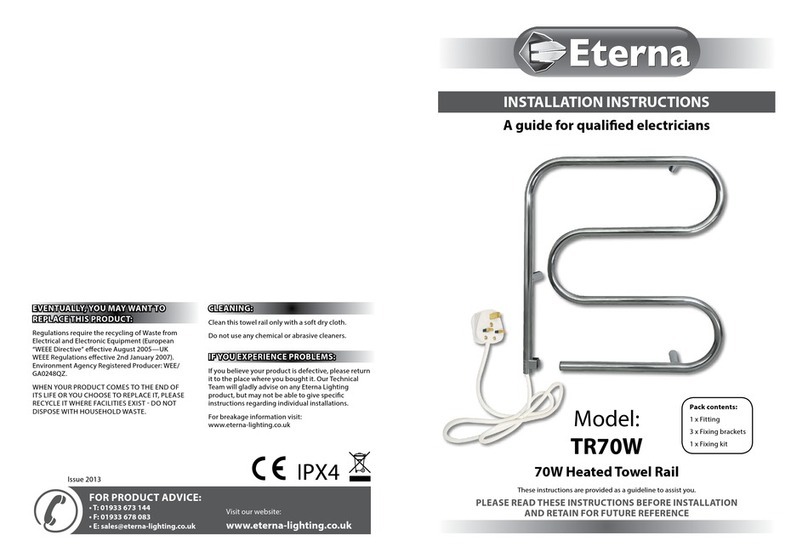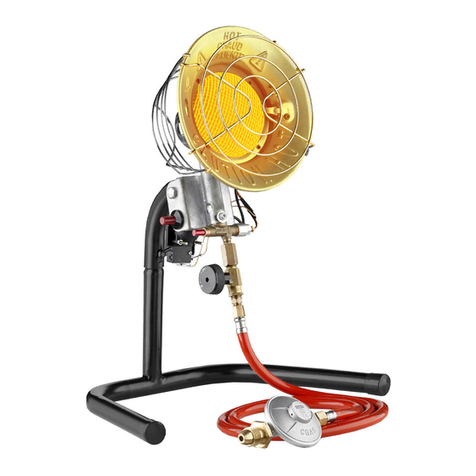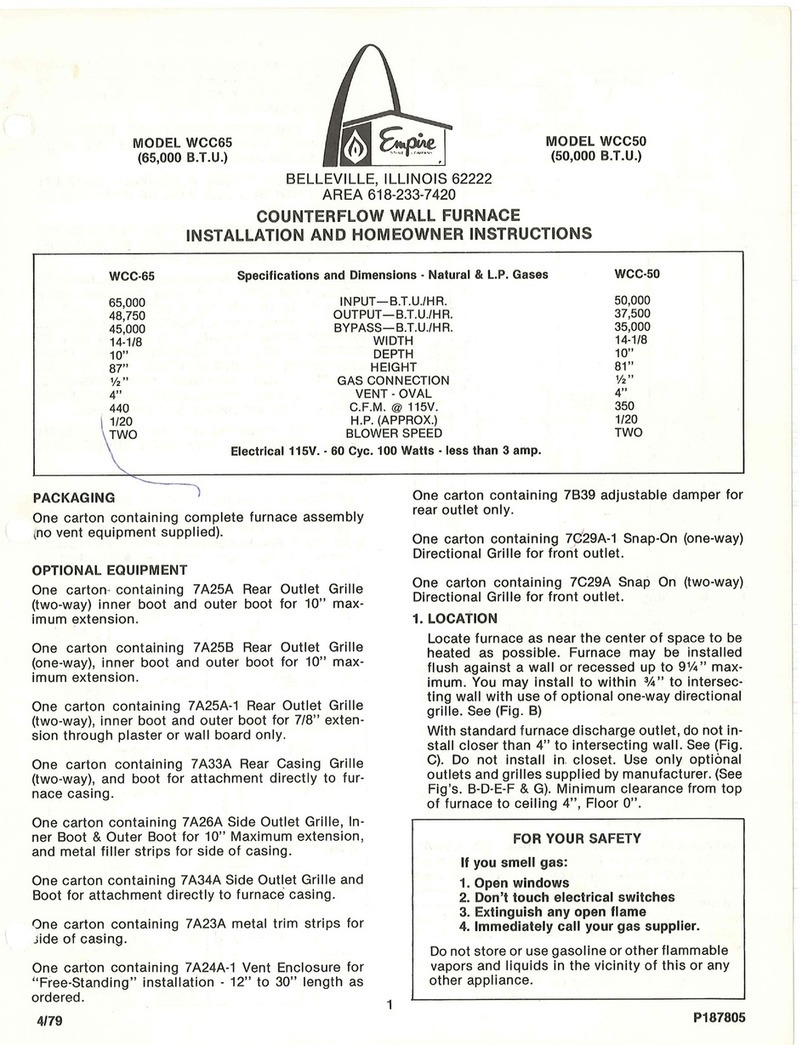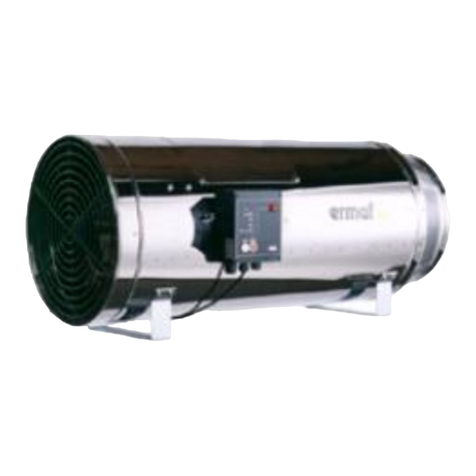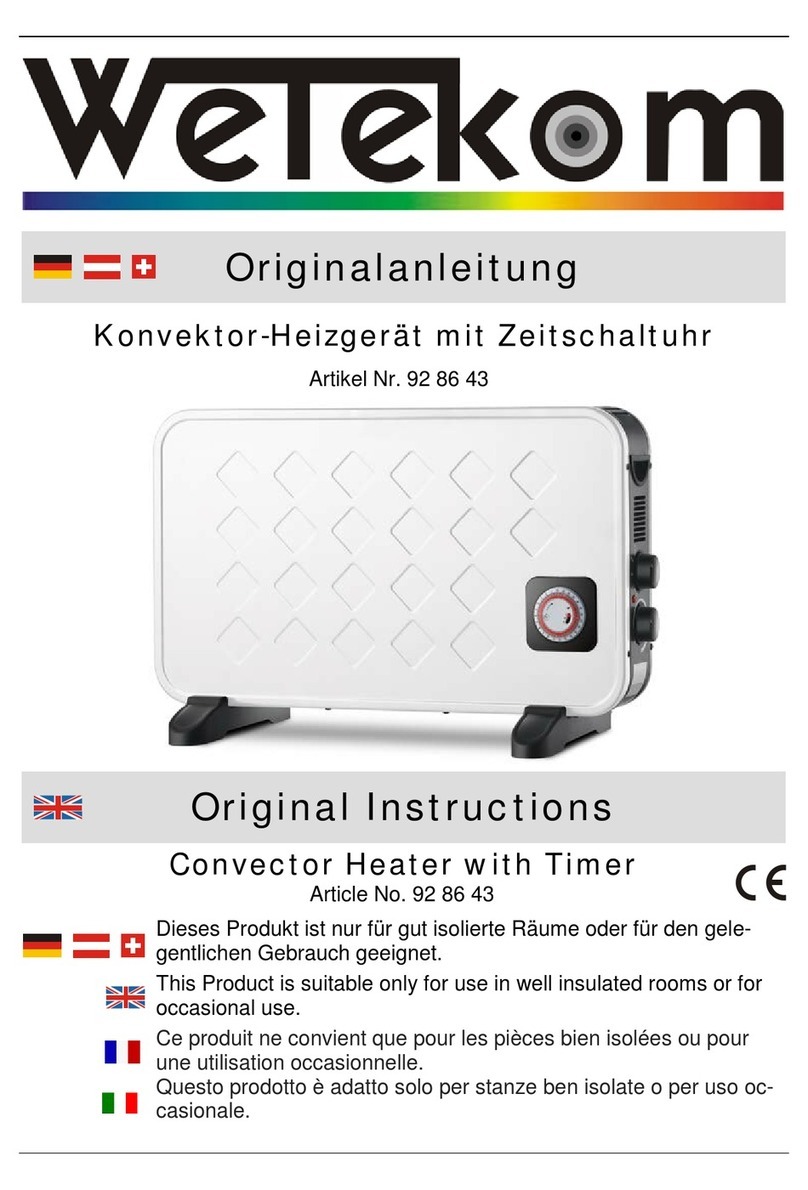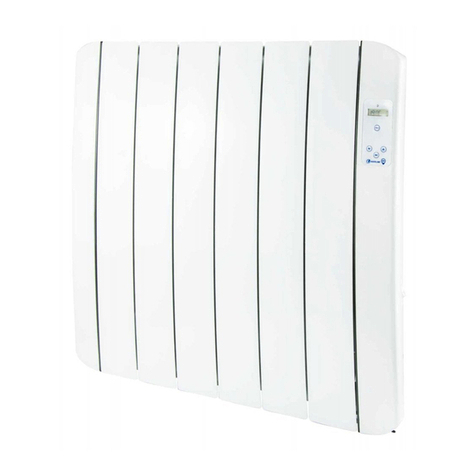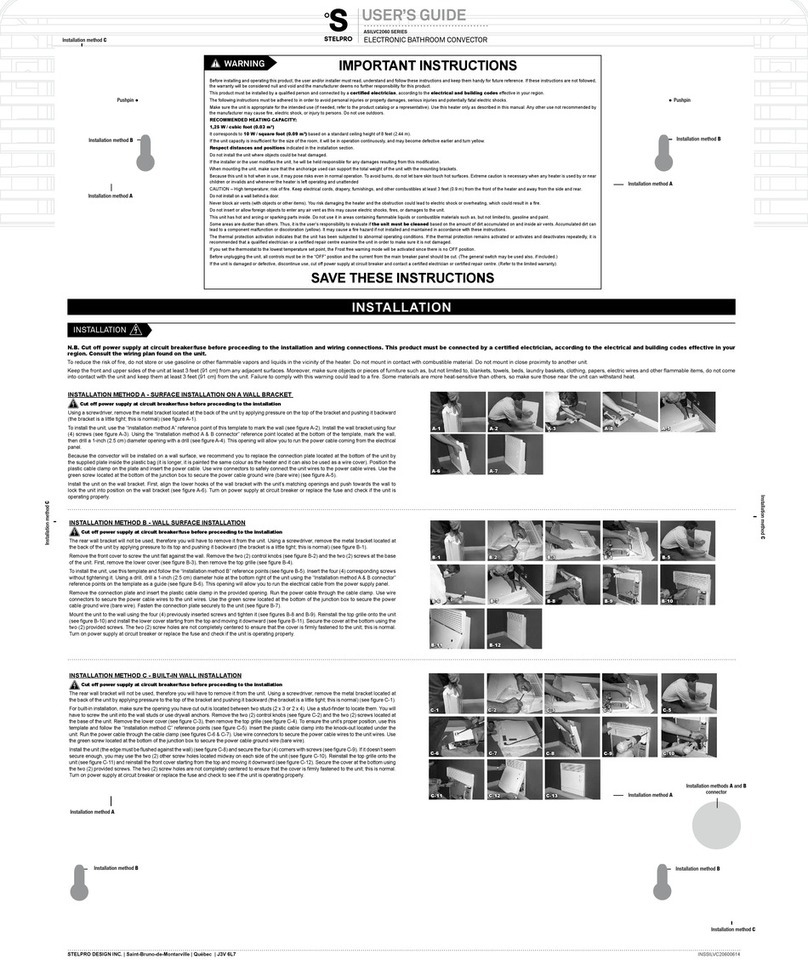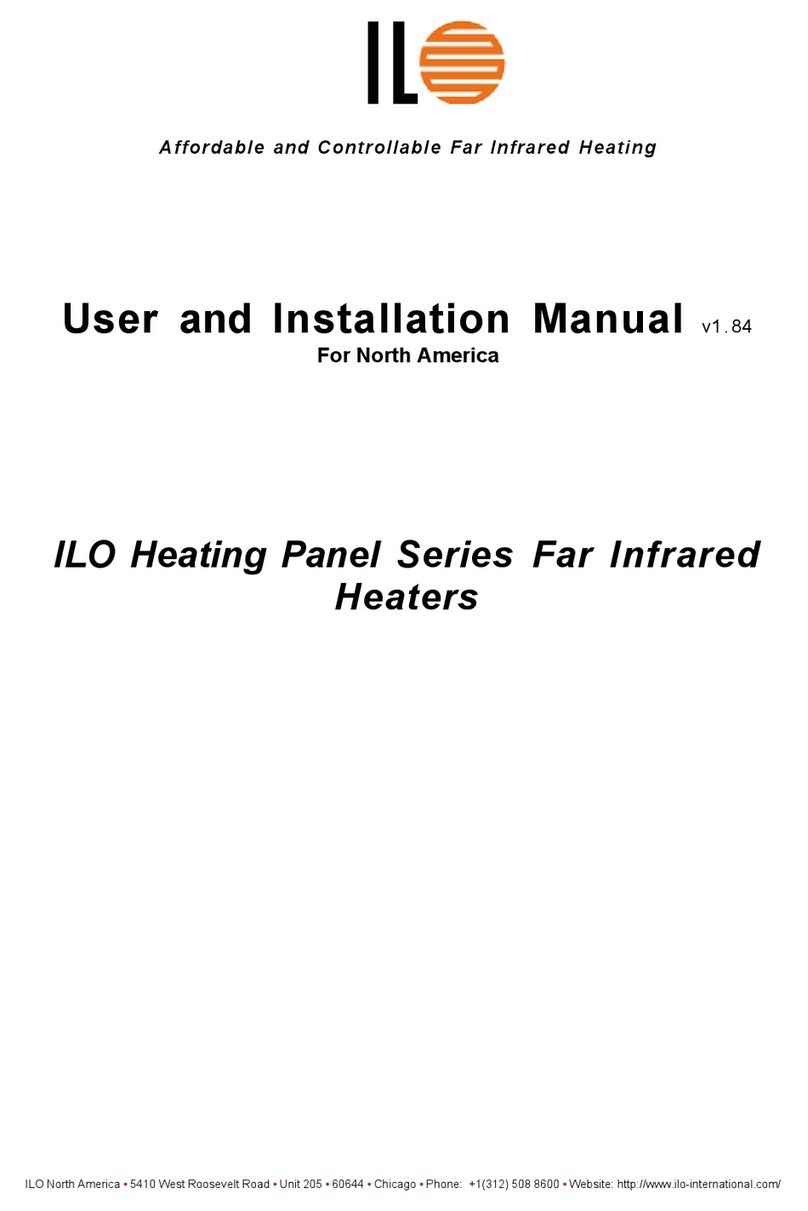8 Technical User Guide
Blow Heaters
3 Method of Operation
The blow heaters are switched on in the same way as all other types of relay-controlled heat sources; i.e. on/off
operation mode - either full capacity or completely closed. The blow heater does not provide modulation as
regards the output.
When heat requirement is registered by the SKOV climate computer, it switches on the blow heaters by
activating the relay assigned to relay-controlled heating. When it operates as air circulator, it is controlled by
the relay for air circulator.
The blow heaters are connected to their own power supply and are permanently provided operating voltage.
Only the start signal itself comes from the SKOV climate computer which is either 24 V AC/DC or 230V.
Each blow heater has its own internal controller - the so-called BCU (Burner Control Unit).
When the blow heater receives a start signal, the BCU runs through the following start-up procedure every time
(see Figure 2):
1. The position of the wind gauge is registered F.
2. The fan is started E.
3. It is checked that the wind gauge Fchanges position. This confirms that the fan works. If the wind
gauge does not change position, the BCU Aterminates the start-up and carries out a troubleshooting
procedure or changes to ALARM mode.
4. The gas supply pressure is checked. If insufficient gas pressure, the BCU (1) terminates the start-up and
carries out a troubleshooting procedure or changes to ALARM mode.
5. Ignition sequence is activated.
6. If sufficient gas pressure, gas vane is turned on B.
7. The ignition sequence is cut off.
8. Ionization current is registered. If a sufficiently high ionization current has not been registered within
5-10 seconds, the BCU terminates the start-up and changes to ALARM mode.
9. If the ionization current is at a sufficient level (5-30 µA), the gas vane remains on until the start signal
from the SKOV climate computer is cut out.
10. When the start signal is cut out, the gas vane is turned off and the burner switches off.
11. The fan continues to run for minimum 10 seconds after the burner is switched off in order to cool down
the blow heater. Subsequently, the fan switches off automatically.
The start-up procedure and the various alarms are described in detail in the manual supplied by the
manufacturer.
The gas is ignited and combusted in a combustion chamber positioned in the middle of the current of air
produced by the fan. This heats up the housing air. During operation, the temperature of the outside surface of
the blow heater does not exceed 45°C.
Apart from the safety functions mentioned above, the BCU currently monitors the blow heater so that it is not
overheating. The BCU Aand the gas combination valve Bare essential safety components on the blow heaters.
For the same reason, the user must not disassemble/repair the gas combination valve and may only to a limited
degree disassemble/repair the BCU.








